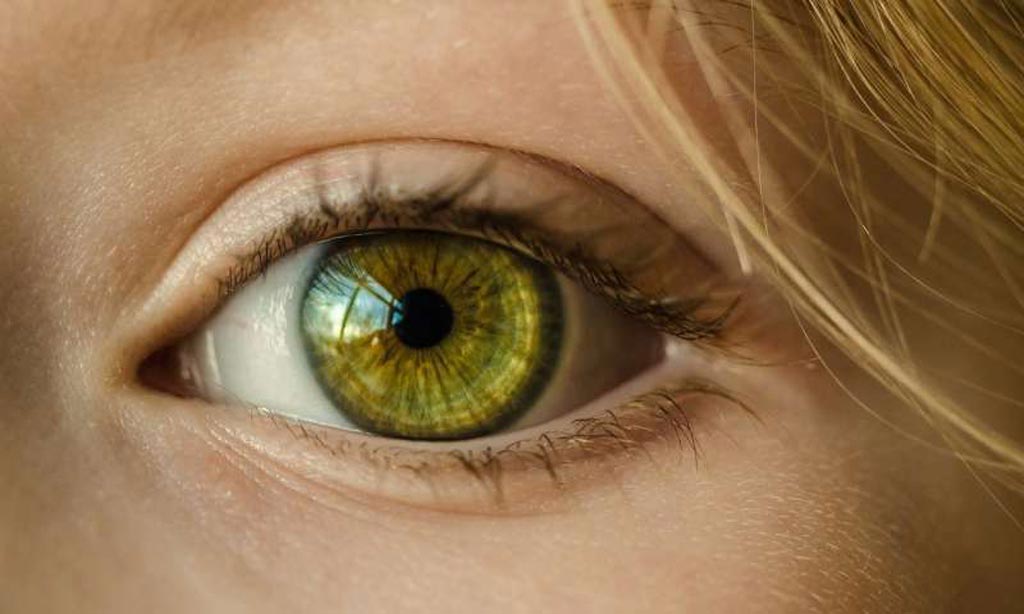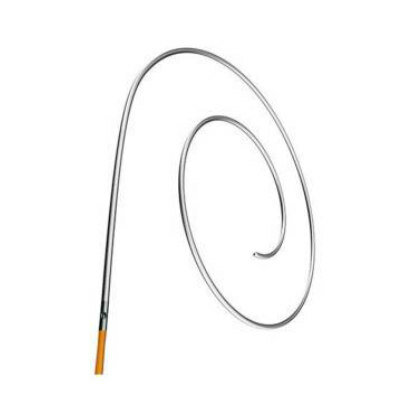Adhesive Eye Gel Repairs Injuries without Surgery
|
By HospiMedica International staff writers Posted on 01 Apr 2019 |

Image: The GelCORE product could help heal corneal injuries without surgery (Photo courtesy of Medical Xpress).
A new study describes how a biomaterial that bonds to the cornea could aid repair and regeneration of injuries that might otherwise require corneal transplant surgery.
Developed at the Massachusetts Eye and Ear Infirmary (MEEI; Boston, USA), GelCORE (gel for corneal regeneration) technology is based on an adhesive gel that incorporates blue-light activated chemicals that can seal cuts or ulcers on the cornea and then encourage the regeneration of corneal tissue. The properties of GelCORE can be finely controlled by varying the concentration and the amount of time exposure to light, offering the possibility of changing the formulation for different types and severities of eye injuries.
In a new study that assessed GelCORE in a preclinical model, the researchers applied the gel at 20% concentration to corneal defects of 3mm, and then applied visible blue light for four minutes. One day later, they observed a transparent, smooth eye surface, with a surrounding cornea that was clear and without inflammation. One week after application, the gel could still be observed on the defect site in the cornea, remaining transparent. Over time, the tissue showed signs of regeneration, with cells of the new tissue showing similarities between regenerated tissue and native tissue. The study was published on March 20, 2019, in Science Advances.
“Our hope is that this biomaterial could fill in a major gap in technology available to treat corneal injuries," said co-corresponding author Reza Dana, MD, director of the cornea and refractive surgery Service at MEEI. “We set out to create a material that is clear, strongly adhesive, and permits the cornea to not only close the defect, but also to regenerate. We wanted this material to allow the cells of the cornea to mesh with the adhesive and to regenerate over time to mimic something as close to the native cornea as possible.”
Corneal injuries are a common cause of visual impairment worldwide, with more than 1.5 million new cases of corneal blindness reported every year. The current standard of care for filling in cuts, thinning areas, or corneal defects includes synthetic glues, surgery, and corneal transplants. The synthetic glues currently available are rough, inherently toxic to tissues, difficult to handle, and can lead to significant vision loss due to inherent opacity and poor integration with corneal tissues. Corneal transplants carry risks of post-transplant complications, including infection or rejection.
Related Links:
Massachusetts Eye and Ear Infirmary
Developed at the Massachusetts Eye and Ear Infirmary (MEEI; Boston, USA), GelCORE (gel for corneal regeneration) technology is based on an adhesive gel that incorporates blue-light activated chemicals that can seal cuts or ulcers on the cornea and then encourage the regeneration of corneal tissue. The properties of GelCORE can be finely controlled by varying the concentration and the amount of time exposure to light, offering the possibility of changing the formulation for different types and severities of eye injuries.
In a new study that assessed GelCORE in a preclinical model, the researchers applied the gel at 20% concentration to corneal defects of 3mm, and then applied visible blue light for four minutes. One day later, they observed a transparent, smooth eye surface, with a surrounding cornea that was clear and without inflammation. One week after application, the gel could still be observed on the defect site in the cornea, remaining transparent. Over time, the tissue showed signs of regeneration, with cells of the new tissue showing similarities between regenerated tissue and native tissue. The study was published on March 20, 2019, in Science Advances.
“Our hope is that this biomaterial could fill in a major gap in technology available to treat corneal injuries," said co-corresponding author Reza Dana, MD, director of the cornea and refractive surgery Service at MEEI. “We set out to create a material that is clear, strongly adhesive, and permits the cornea to not only close the defect, but also to regenerate. We wanted this material to allow the cells of the cornea to mesh with the adhesive and to regenerate over time to mimic something as close to the native cornea as possible.”
Corneal injuries are a common cause of visual impairment worldwide, with more than 1.5 million new cases of corneal blindness reported every year. The current standard of care for filling in cuts, thinning areas, or corneal defects includes synthetic glues, surgery, and corneal transplants. The synthetic glues currently available are rough, inherently toxic to tissues, difficult to handle, and can lead to significant vision loss due to inherent opacity and poor integration with corneal tissues. Corneal transplants carry risks of post-transplant complications, including infection or rejection.
Related Links:
Massachusetts Eye and Ear Infirmary
Latest Critical Care News
- CPR Guidelines Updated for Pediatric and Neonatal Emergency Care and Resuscitation
- Ingestible Capsule Monitors Intestinal Inflammation
- Wireless Implantable Sensor Enables Continuous Endoleak Monitoring
- Pulse Oximeter Index Offers Non-Invasive Guides for Fluid Therapy
- Wearable Patch for Early Skin Cancer Detection to Reduce Unnecessary Biopsies
- 'Universal' Kidney to Match Any Blood Type
- Light-Based Technology to Measure Brain Blood Flow Could Diagnose Stroke and TBI
- AI Heart Attack Risk Assessment Tool Outperforms Existing Methods
- Smartphone Imaging System Enables Early Oral Cancer Detection
- Swallowable Pill-Sized Bioprinter Treats GI Tract Injuries

- Personalized Brain “Pacemakers” Could Help Patients with Hard-To-Treat Epilepsy
- Microscopic DNA Flower Robots to Enable Precision Medicine Delivery
- Origami Robots to Deliver Medicine Less Invasively and More Effectively
- Improved Cough-Detection Technology Aids Health Monitoring
- AI Identifies Children in ER Likely to Develop Sepsis Within 48 Hours
- New Radiofrequency Therapy Slows Glioblastoma Growth
Channels
Surgical Techniques
view channel
Robotic Assistant Delivers Ultra-Precision Injections with Rapid Setup Times
Age-related macular degeneration (AMD) is a leading cause of blindness worldwide, affecting nearly 200 million people, a figure expected to rise to 280 million by 2040. Current treatment involves doctors... Read more
Minimally Invasive Endoscopic Surgery Improves Severe Stroke Outcomes
Intracerebral hemorrhage, a type of stroke caused by bleeding deep within the brain, remains one of the most challenging neurological emergencies to treat. Accounting for about 15% of all strokes, it carries... Read morePatient Care
view channel
Revolutionary Automatic IV-Line Flushing Device to Enhance Infusion Care
More than 80% of in-hospital patients receive intravenous (IV) therapy. Every dose of IV medicine delivered in a small volume (<250 mL) infusion bag should be followed by subsequent flushing to ensure... Read more
VR Training Tool Combats Contamination of Portable Medical Equipment
Healthcare-associated infections (HAIs) impact one in every 31 patients, cause nearly 100,000 deaths each year, and cost USD 28.4 billion in direct medical expenses. Notably, up to 75% of these infections... Read more
Portable Biosensor Platform to Reduce Hospital-Acquired Infections
Approximately 4 million patients in the European Union acquire healthcare-associated infections (HAIs) or nosocomial infections each year, with around 37,000 deaths directly resulting from these infections,... Read moreFirst-Of-Its-Kind Portable Germicidal Light Technology Disinfects High-Touch Clinical Surfaces in Seconds
Reducing healthcare-acquired infections (HAIs) remains a pressing issue within global healthcare systems. In the United States alone, 1.7 million patients contract HAIs annually, leading to approximately... Read moreHealth IT
view channel
Printable Molecule-Selective Nanoparticles Enable Mass Production of Wearable Biosensors
The future of medicine is likely to focus on the personalization of healthcare—understanding exactly what an individual requires and delivering the appropriate combination of nutrients, metabolites, and... Read moreBusiness
view channel
Philips and Masimo Partner to Advance Patient Monitoring Measurement Technologies
Royal Philips (Amsterdam, Netherlands) and Masimo (Irvine, California, USA) have renewed their multi-year strategic collaboration, combining Philips’ expertise in patient monitoring with Masimo’s noninvasive... Read more
B. Braun Acquires Digital Microsurgery Company True Digital Surgery
The high-end microsurgery market in neurosurgery, spine, and ENT is undergoing a significant transformation. Traditional analog microscopes are giving way to digital exoscopes, which provide improved visualization,... Read more
CMEF 2025 to Promote Holistic and High-Quality Development of Medical and Health Industry
The 92nd China International Medical Equipment Fair (CMEF 2025) Autumn Exhibition is scheduled to be held from September 26 to 29 at the China Import and Export Fair Complex (Canton Fair Complex) in Guangzhou.... Read more














